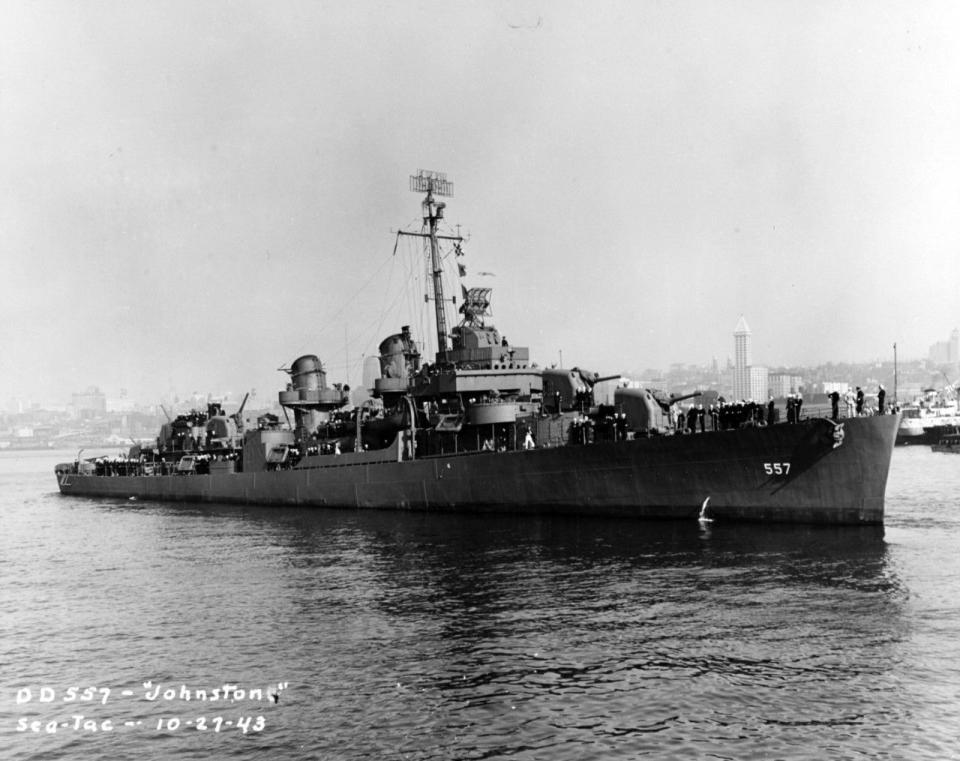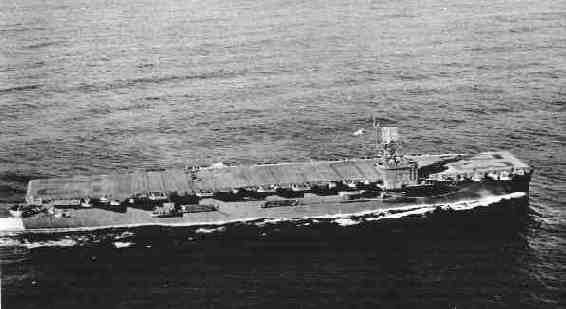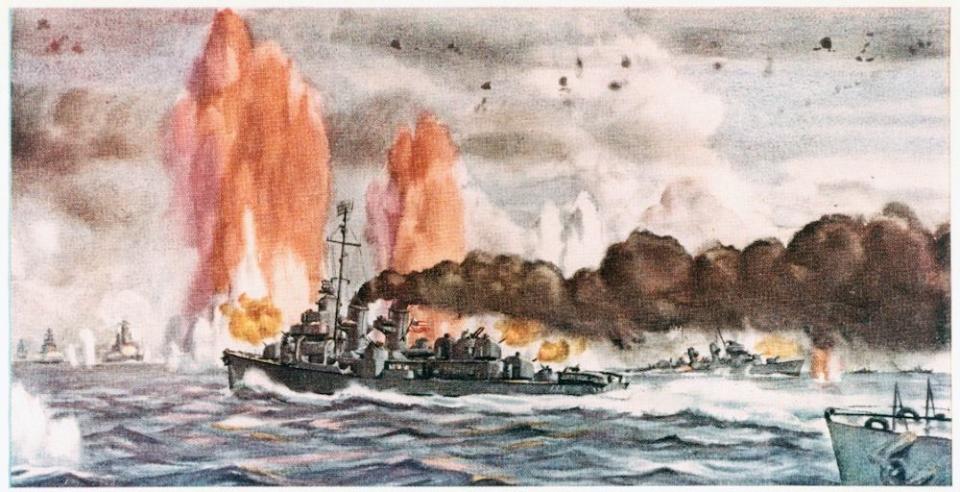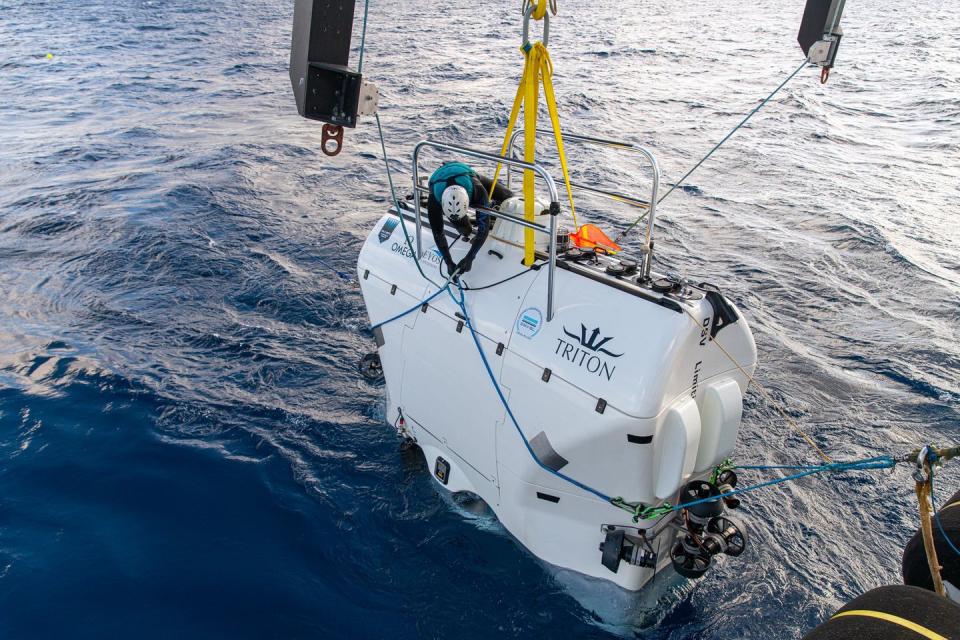Explorers Just Found the Remains of a WWII Hero Destroyer

Underwater explorers have confirmed the identity of the sunken destroyer USS Johnston.
Johnston and her sister ships saved the lives of thousands of sailors taking on a much larger Japanese force during the World War II Battle of Samar.
The explorers positively identified the sunken warship in nearly 4 miles of water, where it’s protected by U.S. law from looting.
Explorers have finally identified the remains of a U.S. Navy destroyer that sunk during one of the most heroic actions of World War II.
The USS Johnston went down defending a force of lightly armed escort carriers from a much larger Japanese force that included the battleship Yamato. The action saved the lives of thousands and won Johnston’s commander a posthumous Congressional Medal of Honor.

The fateful action took place during the Battle of Leyte Gulf, which pitched the U.S. Navy against Japanese air and naval forces in October 1944. The battle was a decisive victory for the Allies, destroying what remained of Japanese naval power and permitting the amphibious landings that liberated the Philippines.
The Battle of Leyte Gulf included one of the fiercest fleet actions to involve the U.S. Navy. While the Navy enjoyed a decisive advantage in ships and planes, the Battle off Samar
saw an American task force heavily outnumbered by a superior Japanese force in ships and firepower.

The Battle off Samar saw Rear Adm. Clifton Sprague’s six escort carriers (known as Taffy 3)—guarded by three destroyers (including Johnston) and four destroyer escorts—face off against a major Japanese task force of four battleships, six heavy cruisers, two light cruisers, and 11 destroyers. The force included Yamato, the biggest battleship ever built.
During the action, Taffy 3’s escorts, hopelessly outnumbered, charged headlong into the Japanese task force. Johnston and her fellow escorts intended to buy the American escort carriers time to escape. The escorts confronted the guns of the Japanese fleet—including the 18-inch guns of Yamato, the largest ever fitted to a battleship—with their own meager 5-inch guns and torpedoes.
The escorts knew if the Japanese broke through their thin screen, the lives of thousands of Americans were at risk—not only those on the escort carriers, but on transports of the Philippines-bound invasion fleet, too.

Johnston, led by Cdr. Ernest Evans, inflicted heavy damage on a far larger ship, the Imperial Japanese Navy heavy cruiser Kumano. But enemy battleships struck the destroyer several times, crippling it and leaving it dead in the water 2.5 hours after the battle started.
Evans gave the order to abandon ship, according to the U.S. Navy History and Heritage Command, and only 141 of 327 crew survived. Evans was awarded the Congressional Medal of Honor for the spirited counterattack, which almost certainly saved thousands of lives.
The Battle off Samar took place above the Philippine Trench, and for decades, historians have assumed the ships sunk in the battle had been lost in deep water. In 2019, however, an underwater exploration team led by the R/V Petrel discovered the remains of a Fletcher-class destroyer in 21,180 feet of water.
The expedition, according to U.S. Naval Institute News, couldn’t determine the identity of the destroyer, which could have been USS Johnston or her fellow Taffy 3 escort, USS Hoel, which also sunk during the battle.
Last week, Caladan Oceanic released footage of the same wreck that confirmed it as the USS Johnston.
Caladan, founded by two former U.S. Navy officers, used a manned submersible to survey the wreck. The submersible, Limiting Factor, made two 8-hour dives—the deepest wreck dives on record—to discover the bow of the sunken destroyer. The hull number, 557, is clearly visible despite having been underwater for nearly 77 years. Limiting Factor also took imagery of Johnston’s bridge, 5-inch guns, and deck-mounted torpedo tubes.

The expedition left the Johnston in place. As a U.S. Navy warship sunk in battle, she’s technically a grave site and enjoys legal protections to deter looters. The 2004 Sunken Military Craft Act protects all U.S. naval wrecks worldwide from “looters, treasure hunters, and others who may cause damage.”
🎥 Now Watch This:
You Might Also Like

